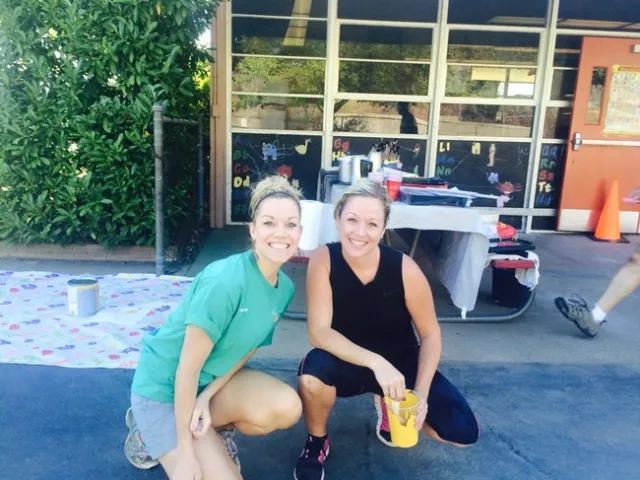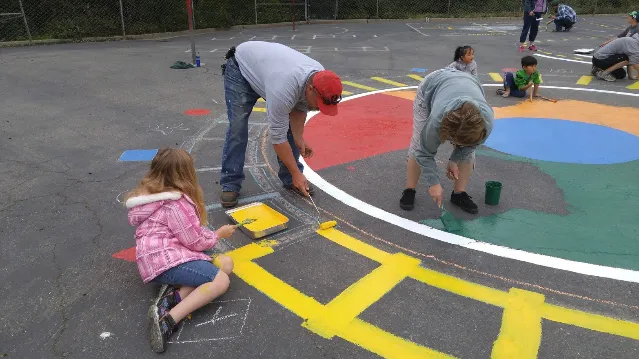Over the past year, UC CalFresh Butte Cluster in collaboration with community partners, and school site staff, parents and volunteers has executed several new stencil and mural projects at school sites in Butte, Glenn, Colusa, Sutter and Yuba Counties. All stencil/mural projects have been designed to promote physical activity, nutrition, and gardening. The designs integrate Coordinated Approach to Children's Health (CATCH) curriculum and trainings to improve the quality of physical activity being offered at these school sites. Many stencil projects included a grid and other components included in the CATCH curriculum, which designates a safe area and provides opportunities for students to practice their locomotor skills. These locomotor skills include:
- Walking: Moving with one foot on the ground at all times
- Running: Sometimes both feet are in the air while traveling
- Hopping: Moving up and down on one foot
- Jumping: Going up and down, with both feet in the air at once; can also mean jumping off a height or jumping forward
- Galloping: Traveling with one foot always in the lead
- Sliding: Galloping sideways
- Leaping: Jumping forward or back with one leg outstretched; taking off on one foot and landing on the other
- Skipping: Alternating steps and hops
Following the completion of each stencil/mural project, UC CalFresh Butte Cluster staff trains teachers at each site on how to properly implement CATCH activities on their newly stenciled playground. In addition to physical activity components, the stencil and mural designs also integrate concepts the children discover in the classroom by including site words, patterns, and numbers. They also include elements like MyPlate, the plant life cycle, and the water cycle which help to reinforce concepts from UC CalFresh nutrition and garden curricula.
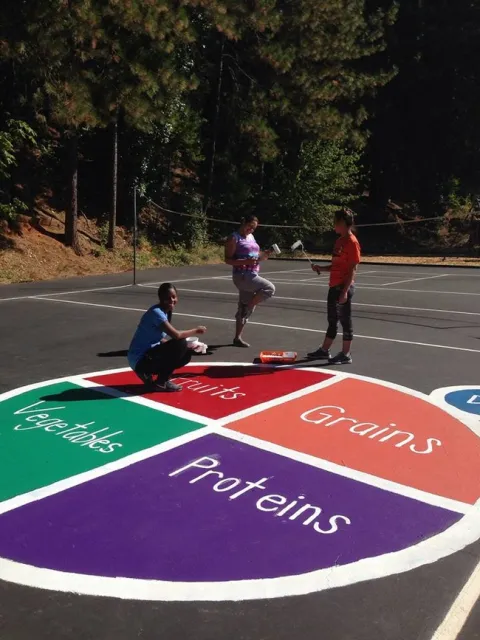
These multifaceted designs provide more opportunities to practice the skills learned in class and increase the likelihood that students will be more physically active during free play. Teachers can utilize the stenciled playgrounds to implement CATCH lessons as part of the required state physical education requirements or incorporate more PA into their classroom activities. Training the teachers to use CATCH is one of the three sustainable agreements made between UC CalFresh Butte Cluster and the interested schools before a project takes place. Schools must agree to recruit volunteers and community members to help implement these playground stencil projects. This model has been proven to be very successful.
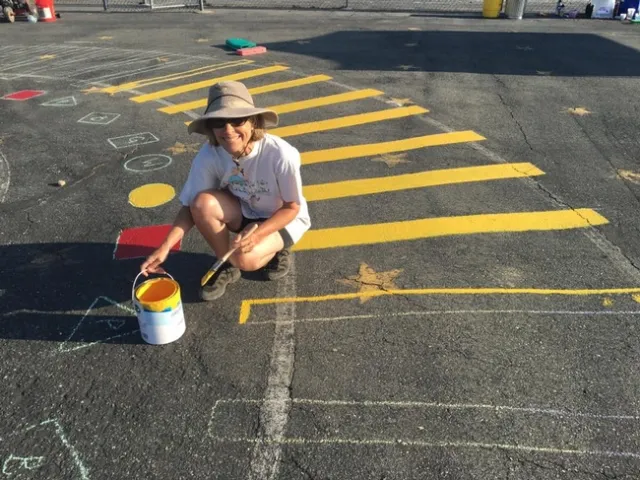
The intention is that the environmental changes that were made at these schools who received murals and playground stencil painting will last many years and illustrate ongoing healthy messaging. In addition, these projects provide schools with the “hardscape” to support the CATCH programs being taught in classrooms. These combined efforts culminate in creating a healthier living and increase movement in the school community.
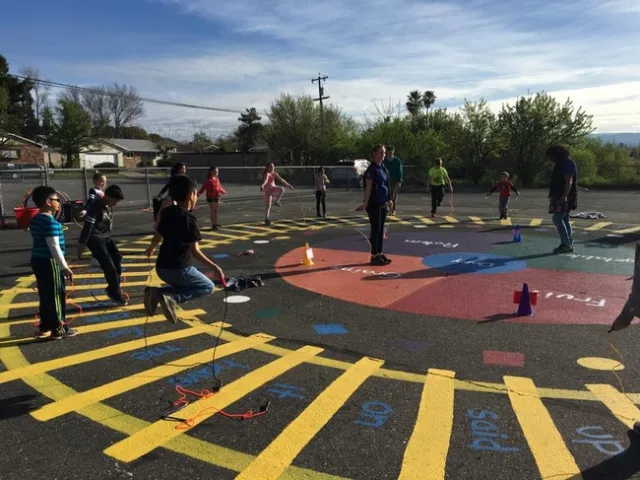
Tips for a Successful Stencil Project
1. It is recommended to use asphalt or oil-based paint. Do not use water-based paint as it will fade quickly. Paint dries fast so always keep the lid on and out of direct sunlight.
2. Keep the paint on a tarp to prevent spills. If possible, have a paint station that is covered from the sun.
3. Don't buy expensive brushes: the brushes will be likely be destroyed at the end of the day. Two-inch paintbrushes can be used to outline the stencil. Paint rollers are not recommended if you want precise outlines.
4. Just because there isn't a stencil does not mean you cannot do it! Be creative, homemade stencils made out of cardboard work just as well as plastic stencils. For example, to create a circle, a human protractor with string and chalk work great.
5. For adult led projects: chalk out the design first. For youth led projects: paint directly on the stencils. Chalking out the stencil and then painting results in straighter lines. Painting directly on the stencil can lead to smeared edges.
6. Remember to save the extra paint for the site to administer yearly touch ups as needed.
7. For the basic stencils, you will need 1 gallon of paint per color for the standard playground and should have paint left over for touch ups. For more detailed projects, such as those done free hand (i.e. murals on playground), you will need at least 1 gallon more of each color you are using. If mixing colors, you will need more white paint.
8. Meet with the director of the facility throughout the process; allow them to help determine activities that will enhance learning through movement.
